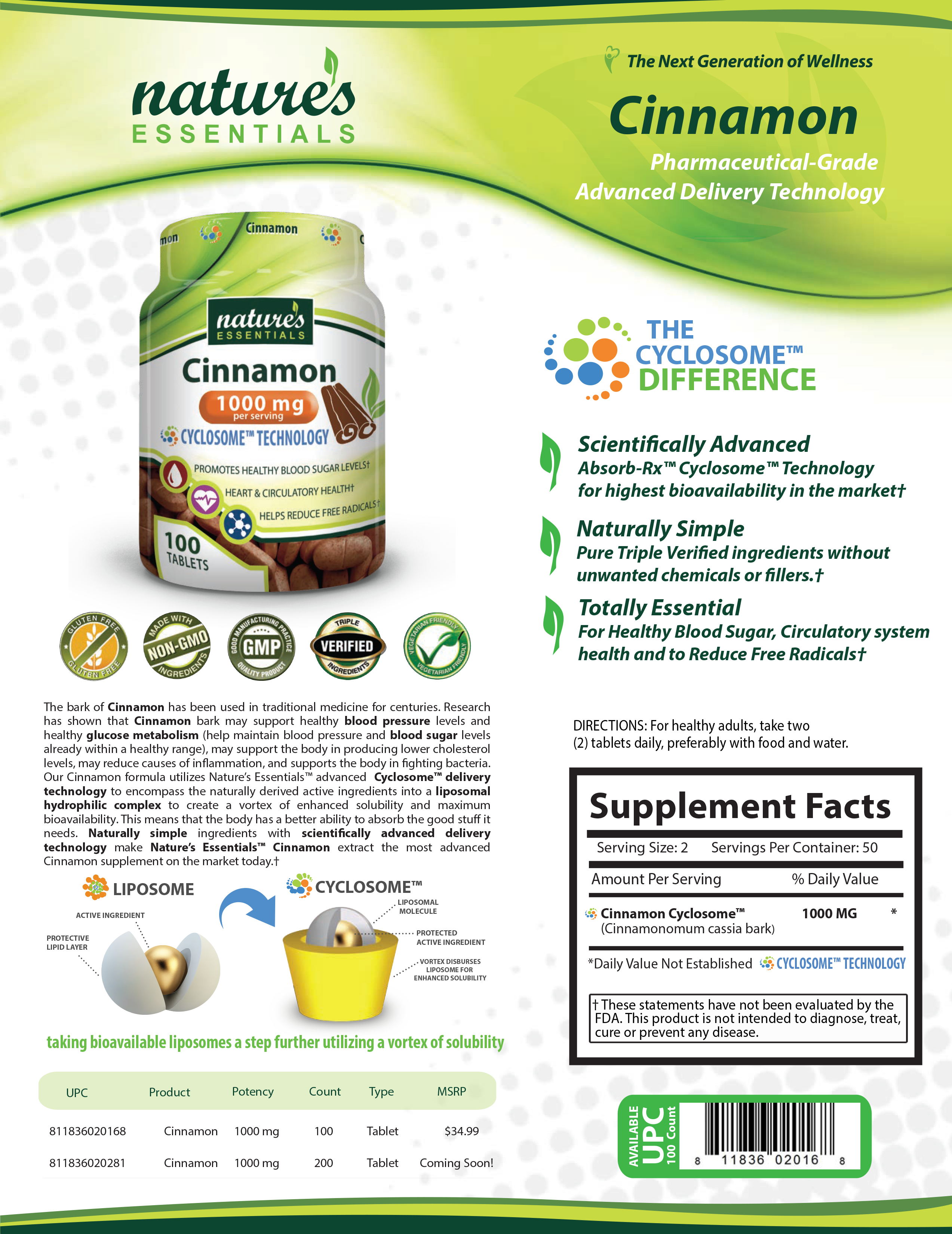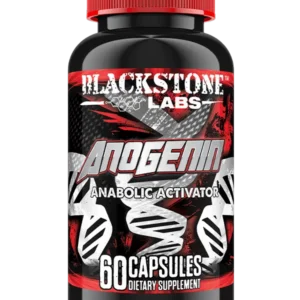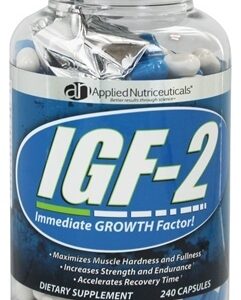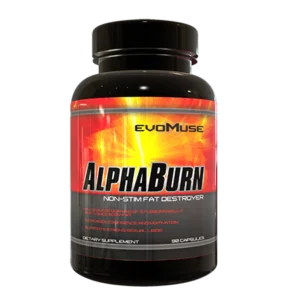Nature’s Essentials Cinnamon 100ct. Expired 10/19
$24.95 Original price was: $24.95.$4.99Current price is: $4.99.
In stock
Expired 10/19
Description
Expired 10/19
- Cyclosome Technology (better absorption rate)
- Healthy Blood Sugar
- Heart & Circulatory Support
The bark of cinnamon has been used in traditional medicine for centuries. Research has shown that cinnamon bark may support healthy blood pressure levels already within a healthy range and may support healthy glucose metabolism (help maintain blood sugar levels already within a healthy range), may support the body in producing lower cholesterol levels, may reduce the body?s response to inflammation, and supports the body in fighting bacteria. However, Cinnamon is not well absorbed by the body and is not readily water soluble. Therefore, Nature?s Essentials Cinnamon combines the cinnamon bark with our Cyclosome Technology creating the most advanced cinnamon complex available with a vortex of solubility on a microscopic level increasing the body?s ability to absorb the good stuff it needs.
With our Cyclosome? Liposomal Delivery Technology Nature?s Essentials Cinnamon is unique and unlike any other Cinnamon product available on the market today. The Cyclosome? Liposomal Technology is specially designed for optimal absorption by taking an insoluble ingredient like Cinnamon that only has a bioavailability of roughly 50-62% and making it not only soluble equivalent to a homogenous emulsification while also still protecting the active ingredient with lipid technology. This barrier of protection allows the 1% minimum of doubly-linked polyphenol type-A polymers (which are considered to be the bioactive component of cinnamon) to be fully absorbed rather than lost in the acids of the stomach. Nature?s Essentials Cinnamon is truly the most technologically advanced Cinnamon supplement on the market today.
Anti-oxidant Activity Studies
Cinnamon bark contains procyanidins and catechins [8]. The components of procyanidins include both procyanidin A-type and B-type linkages [9?11]. These procyanidins extracted from cinnamon and berries also possess antioxidant activities [10, 12].
The aqueous and alcoholic extract (1 : 1) of cinnamon potentially significantly inhibits fatty acid oxidation and lipid peroxidation in vitro [23]. Different flavonoids isolated from cinnamon have free-radical-scavenging activities and antioxidant properties [57]. A study of the inhibitory effects of cinnamaldehyde and other compounds of cinnamon on nitric oxide production revealed that cinnamaldehyde possesses potential activity against the production of nitric oxide as well as the expression of inducible nitric oxide. The highest inhibitory activities were reported as 81.5%, 71.7%, and 41.2% at 1.0, 0.5, and 0.1 ?g/?L, respectively [58]. Lin et al. reported the in vivo antioxidant activity of two different extracts, the ethanolic and hot water extracts of the dry bark of C. cassia. The ethanolic extract of C. cassia exhibited significant inhibition (96.3%) compared to the natural antioxidant α-tocopherol (93.74%) [59]. Overall, cinnamon exhibited higher antioxidant activities compared to that of other dessert spices [60].
The essential oils and some of the major compounds present in cinnamon, including (E)-cinnamaldehyde, eugenol, and linalool, were investigated in reference to peroxynitrite-induced nitration and lipid peroxidation. Eugenol and the essential oils were more effective than the other two compounds [61]. In a comparative study among 26 spices, cinnamon showed the highest antioxidant activity, indicating that it can be applied as an antioxidant used in foods [62]. Another study investigated the effectiveness of a mixture of spices on oxidative stress markers as well as the antioxidant activity in high fructose-fed insulin-resistant rats. The mixture, which consisted of 1 g/100 g cinnamon bark, showed a significant antioxidant activity compared to the fructose alone group [63]. Volatile oils from C. zeylanicum showed significant biological activities [64].
Cinnamon consists of a variety of resinous compounds, including cinnamaldehyde, cinnamate, cinnamic acid, and numerous essential oils [50]. The presence of a wide range of essential oils, such as trans-cinnamaldehyde, cinnamyl acetate, eugenol, L-borneol, caryophyllene oxide, b-caryophyllene, L-bornyl acetate, E-nerolidol, α-cubebene, α-terpineol, terpinolene, and α-thujene, has been reported [35, 36].
A recent study reported that pectin film coated with cinnamon leaf extract yielded high antioxidant and antibacterial activities [71]. Dong et al. reported that cinnamaldehyde (E) extracted from C. cassia is the main compound and is present in levels as high as 72.7% compared to other volatile components [72]. Cinnamaldehyde (E) is well known for its antityrosinase activity [6, 73]. Currently, much attention is given to tyrosinase inhibitors due to their actions in suppressing hyperpigmentation as well as the unsightly browning effects observed in mushrooms, fruits, and vegetables when they are exposed to sunlight or air.
6. Marongiu B, Piras A, Porcedda S, et al. Supercritical CO2 extract of Cinnamomum zeylanicum: chemical characterization and antityrosinase activity. Journal of Agricultural and Food Chemistry. 2007;55(24):10022?10027. [PubMed]
Anti-Inflammatory Study
Several studies on medicinal plants and their components have indicated the anti-inflammatory activities of cinnamon [76?81]. Various studies reported the viability of the anti-inflammatory activity of cinnamon and its essential oils [34?36]. To date, there are several flavonoid compounds (e.g., gossypin, gnaphalin, hesperidin, hibifolin, hypolaetin, oroxindin, and quercetin) that have been isolated and have anti-inflammatory activities [82?86].
A recent study reported that 2′-hydroxycinnamaldehyde isolated from C. cassia bark exhibited an inhibitory effect on the production of nitric oxide by inhibiting the activation of the nuclear factor kappa-light-chain-enhancer of activated B cells (NF-κB), indicating that this substance can potentially be used as an anti-inflammatory agent [87]. The ? extract of C. cassia showed significant anti-inflammatory effects by reducing the activation of Src/spleen-tyrosine-kinase- (Src/Syk-) mediated NF-κB [88, 89]. Various compounds contained in Cinnamon showed anti-inflammatory effects by suppressing the expression of inducible nitric oxide synthesis (iNOS), cyclooxygenase-2 (COX-2), and nitric oxide (NO) production in the central nervous system (CNS). By this mechanism, Cinnamon could be a potential source for the therapeutic treatment or prevention of inflammation-mediated neurodegenerative diseases [90]. Furthermore, the aqueous extract of cinnamon decreases the lipopolysaccharide-induced tumor necrosis factor-α levels in the serum [91].
34. Chao LK, Hua K-F, Hsu H-Y, Cheng S-S, Liu J-Y, Chang S-T. Study on the Antiinflammatory activity of essential oil from leaves of Cinnamomum osmophloeum. Journal of Agricultural and Food Chemistry. 2005;53(18):7274?7278. [PubMed]
Neurological Disorder Studies
Cinnamophilin is a novel thromboxane A2 receptor antagonist isolated from Cinnamon (C. philippinensis) [92]. A study reported that cinnamophilin confers protection against ischemic damage in rat brains when administered at 80 mg/kg at different time intervals (2, 4, and 6 h) after insult. The effects were found to have a considerable effect (by 34?43%) on abridged brain infarction [93] and further enhance neurobehavioral outcomes. Cinnamophilin also dramatically condenses the oxygen glucose deprivation-induced neuronal damage in organotypic hippocampal slices in experimental rats. A substance called procyanidin type-A trimer (trimer 1) isolated from cinnamon?s water-soluble extract showed that trimer 1 may reduce cell swelling by controlling the movement of intracellular calcium [Ca2+]i [94]. Trimer 1 also considerably alleviates the oxygen glucose deprivation-induced diminishing effects on glutamate uptake. The protective effects of trimer 1 in attenuating the diminution in glutamate uptake are possibly arbitrated via their effects on the mitochondria [94].
Parkinson?s disease (PD) is the second major widespread neurodegenerative disorder after Alzheimer?s disease, with a prevalence of 2% in people 65 years and older [95]. PD protein 7 (PARK7) is an autosomal recessive form of early-onset parkinsonism caused by alterations in the DJ-1 gene [96]. Khasnavis and Pahan reported that sodium benzoate, a cinnamon metabolite, upregulates DJ-1 by modulating mevalonate metabolites [97, 98]. Cinnamon and its metabolite sodium benzoate also upregulate the neurotropic factors BDNF (brain-derived neurotropic factors) as well as neurotrophin-3 (NT-3) in the mouse central nervous system [99]. PARK7 is one of the main neuroprotective proteins that protects cells from damage and from the further detrimental effects of oxidative stress; therefore, this protein may be an effective molecule that can be incorporated into the therapeutic intervention of Parkinson?s disease [98].
A natural compound isolated from cinnamon extract precipitation (CEppt) significantly reduces the formation of toxic β-amyloid polypeptide (Aβ) oligomers and prevents its toxicity on neuronal pheochromocytoma (PC12) cells [100]. The study indicated that CEppt resolved the reduced permanence, fully improved deficiencies in locomotion, and totally eradicated the tetrameric species of Aβ in the brain of the fly model of Alzheimer?s disease, leading to a noticeable reduction in the 56 kDa Aβ oligomers, reducing plaques and improving the cognitive performance of transgenic mice models [100].
Another study reported that the aqueous extract of Cinnamon (C. zeylanicum) can reduce tau aggregation and filament formation, two of the main features of Alzheimer?s disease. The extract can also encourage the complete fragmentation of recombinant tau filaments and cause the considerable modification of the morphology of paired helical filaments from Alzheimer?s disease brain [101], indicating the potential of cinnamon in the treatment of Alzheimer?s disease.
92. Yu S-M, Ko F-N, Wu T-S, Lee J-Y, Teng C-M. Cinnamophilin, a novel thromboxane A2 receptor antagonist, isolated from Cinnamomum philippinense. European Journal of Pharmacology. 1994;256(1):85?91. [PubMed]
Antidiabetic Study
A substance from cinnamon has been isolated and coined as ?insulin-potentiating factor? (IPF) [102], while the antidiabetic effects of cinnamon bark have been shown in streptozotocin-induced diabetic rats [33]. Several studies have also revealed that cinnamon extracts lower not only blood glucose but also cholesterol levels [103?107].
A study comparing the insulin-potentiating effects of many spices revealed that the aqueous extract of cinnamon was 20-fold higher than the other spices [108]. Methylhydroxychalcone polymer (MHCP) is the purified polymer of hydroxychalcone with the ability to stimulate glucose oxidation [30, 109]. Anderson et al. isolated and characterized the polyphenol type-A polymers from cinnamon and found that these substances act as insulin-like molecules [9]. Following this characterization, a new compound from hydroxycinnamic acid derivatives named naphthalenemethyl ester, which has blood glucose-lowering effects, has been identified [27], further confirming cinnamon?s antidiabetic effects.
Several polyphenols have been isolated from cinnamon. These polyphenols include rutin (90.0672%), catechin (1.9%), quercetin (0.172%), kaempferol (0.016%), and isorhamnetin (0.103%) [67, 110]. Cao et al. (2007) demonstrated that the aqueous extract of cinnamon containing polyphenols purified by high performance liquid chromatography (HPLC) showed insulin-like activity [111]. The aqueous extract of cinnamon markedly decreased the absorption of alanine in the rat intestine. Alanine plays a vital role in gluconeogenesis, is altered back to pyruvate in the liver, and is utilized as a substrate for gluconeogenesis [112].
In a recent study [114], suitable doses of cinnamon (5, 10, and 20 mg/kg) of the linalool chemotype were found to help with glycemic control in diabetics due to enhanced insulin secretion.
9. Anderson RA, Broadhurst CL, Polansky MM, et al. Isolation and characterization of polyphenol type-A polymers from cinnamon with insulin-like biological activity. Journal of Agricultural and Food Chemistry. 2004;52(1):65?70. [PubMed]
Anti-microbial Activity Study
To date, several antimicrobial activities of cinnamon and its oils have been reported in various studies [20, 28, 115]. For example, Matan et al. reported the effects of cinnamon oils on different bacterial (Pediococcus halophilus and Staphylococcus aureus), fungal (Aspergillus flavus, Mucor plumbeus, Penicillium roqueforti, and Eurotium sp.), and yeast species (Candida lipolytica, Pichia membranaefaciens, Debaryomyces hansenii, and Zygosaccharomyces rouxii) [19], indicating that cinnamon is a natural antimicrobial agent.
A study from Hili et al. indicated that cinnamon oils have potential action against various bacteria (Pseudomonas aeruginosa, Staphylococcus aureus, and Escherichia coli) and yeast (Torulopsis utilis, Schizosaccharomyces pombe, Candida albicans, and Saccharomyces cerevisiae) [18]. A recent study reported the activity of the aqueous extract of cinnamon ? against oral microflora. Overall, the essential oil from cinnamon is more potent than other tested plant extracts, such as Azadirachta indica and Syzygium aromaticum [117].
18. Hili P, Evans CS, Veness RG. Antimicrobial action of essential oils: the effect of dimethylsulphoxide on the activity of cinnamon oil. Letters in Applied Microbiology. 1997;24(4):269?275. [PubMed]
Anti-Cancer Study
According to studies, the aqueous extract and the fraction of cinnamon (procyanidins) from HPLC inhibit vascular endothelial growth factor subtype 2 (VEGFR2) kinase activity, thereby inhibiting the angiogenesis involved in cancer. The results of the study revealed that cinnamon could potentially be used in cancer prevention [44]. Cinnamaldehydes have been synthesized and tested as inhibitors against angiogenesis [118]. Jeong et al. reported that CB403, a chemical that can be synthesized from 2′-hydroxycinnamaldehyde derived from cinnamaldehyde, can inhibit tumor growth. Overall, the antitumor and growth-inhibitory properties of CB403 in animal-based studies as well as in cell culture-based studies indicate the potential of cinnamon to be used as an anticancer agent [119].
Cabello et al. reported that cinnamic aldehyde inhibits the activity of NF-κB and the production of tumor necrosis factor alpha (TNFα-) induced interleukin-8 (IL-8) in A375 cells [120]. This inhibition provides additional support to the existing unrecognized role of cinnamic acid as a potential anticancer agent [120]. Fang and others reported the anticancer effect of trans-cinnamaldehyde from C. osmophloeum, finding that trans-cinnamaldehyde showed potential effects in restraining tumor cell growth and in enhancing tumor cell apoptosis [121].
The essential oils extracted from C. cassia inhibit alpha melanocyte-stimulating hormone?s induced melanin production, thereby suppressing oxidative stress in murine B16 melanoma cells [7].
44. Lu J, Zhang K, Nam S, Anderson RA, Jove R, Wen W. Novel angiogenesis inhibitory activity in cinnamon extract blocks VEGFR2 kinase and downstream signaling. Carcinogenesis. 2010;31(3):481?488. [PMC free article] [PubMed]
Cardiovascular Disease Study
One of the active components isolated from C. cassia named 2-methoxycinnamaldehyde (2-MCA) decreases the expression of vascular cell adhesion molecule-1 (VCAM-1) in TNFα-activated endothelial cells, suggesting that ischemia/reperfusion (I/R) injury is ameliorated due to the induction of hemeoxygenase- (HO-) 1 [123]. A recent study reported the potential effects of two compounds, cinnamic aldehyde and cinnamic acid, isolated from C. cassia against myocardial ischemia [124], indicating that cinnamon also has the potential to be used to treat cardiovascular diseases.
Several studies have reported the protective effects of cinnamaldehyde on the cardiovascular system. Cinnamophilin is one of the important lignans isolated from C. philippinensis and has been confirmed to have thromboxane A2 (TXA2) receptor blocking activity in rats as well as in guinea pigs [125]. Cinnamophilin acts as a potential thromboxane synthase inhibitor and TXA2 receptor antagonist and may be helpful when incorporated in the treatment of diseases involving TXA2 disorders [125], such as platelet aggregation [126] and cancers [127]. Cinnamophilin mainly inhibits thromboxane receptor-mediated vascular smooth muscle cell proliferation and may have the potential for use in the prevention of vascular diseases and atherosclerosis [128].
Cinnamaldehyde produces hypotensive effects, which are possibly mainly due to peripheral vasodilatation in anesthetized dogs and guinea pigs [129]. The vasodilatation induced by cinnamaldehyde in dogs lasted and remained over the recovery period of the fall in blood pressure to the baseline [130]. A recent study showed that cinnamaldehyde expands rat vascular smooth muscle in an endothelium-independent manner. The ability of cinnamaldehyde in vasodilatory function may be because it impedes both Ca2+ influx and Ca2+ release [131]. Cinnamaldehyde averts the progress of hypertension in types 1 and 2 diabetes by abridging vascular contractility, in addition to its insulinotropic effect in insulin deficiency [132].
123. Hwa JS, Jin YC, Lee YS, et al. 2-Methoxycinnamaldehyde from Cinnamomum cassia reduces rat myocardial ischemia and reperfusion injury in vivo due to HO-1 induction. Journal of Ethnopharmacology. 2012;139(2):605?615. [PubMed]
Cholesterol Lowering Studies
The administration of cinnamon to mice positively affected the lipid profile, whereby the high density lipoprotein (HDL) cholesterol levels decreased, and plasma triglycerides were reduced [27]. Another study by [133] found a reduction in the total cholesterol, triglycerides, and low-density lipoproteins in rats administered Cinnamomum cassia powder (15%) for 35 days. Additionally, cinnamon oils reduced the cholesterol levels in broiler chickens [134]. A study by Khan et al. reported that the administration of cinnamon at 1, 3, and 6 g doses per day caused a reduction in serum glucose, triglyceride, total cholesterol, and LDL cholesterol levels in humans [104].
[27. Kim SH, Hyun SH, Choung SY. Anti-diabetic effect of cinnamon extract on blood glucose in db/db mice. Journal of Ethnopharmacology. 2006;104(1-2):119?123. [PubMed]
133. Rahman S, Begum H, Rahman Z, Ara F, Iqbal MJ, Yousuf AKM. Effect of cinnamon (Cinnamomum cassia) as a lipid lowering agent on hypercholesterolemic rats. Journal of Enam Medical College. 2013;3(2):94?98.]
Advanced Glycation End Study
Different types of phenolic and flavonoid compounds have been isolated from cinnamon. Epicatechin, catechin, and procyanidin B2, which are the phenolic compounds isolated from cinnamon, showed noteworthy and potentially inhibitory activities on the formation of AGEs. These antiglycation activities of the phenolic compounds not only are attributed to their antioxidant activities but also are associated with the entrapping capabilities of reactive carbonyl species, such as methylglyoxal (MGO), an intermediate reactive carbonyl of AGE formation [10, 135]. The inhibition of AGE formation by trapping the reactive carbonyl species could be a logical therapeutic approach to treat diabetes and its complications [10].
[10. Peng X, Cheng K-W, Ma J, et al. Cinnamon bark proanthocyanidins as reactive carbonyl scavengers to prevent the formation of advanced glycation endproducts. Journal of Agricultural and Food Chemistry. 2008;56(6):1907?1911. [PubMed]

Related products
-
Sale!

Blackstone Labs Anogenin 60ct, Expired 2/20
$54.99Original price was: $54.99.$14.99Current price is: $14.99. Add to cart -
Sale!

Applied Nutriceuticals IGF-2, 240ct, Expires 3/21
$35.99Original price was: $35.99.$19.99Current price is: $19.99. Add to cart -
Sale!

EvoMuse AlphaBurn 90ct, Expires 3/24
$18.99Original price was: $18.99.$12.99Current price is: $12.99. Add to cart





Reviews
There are no reviews yet.